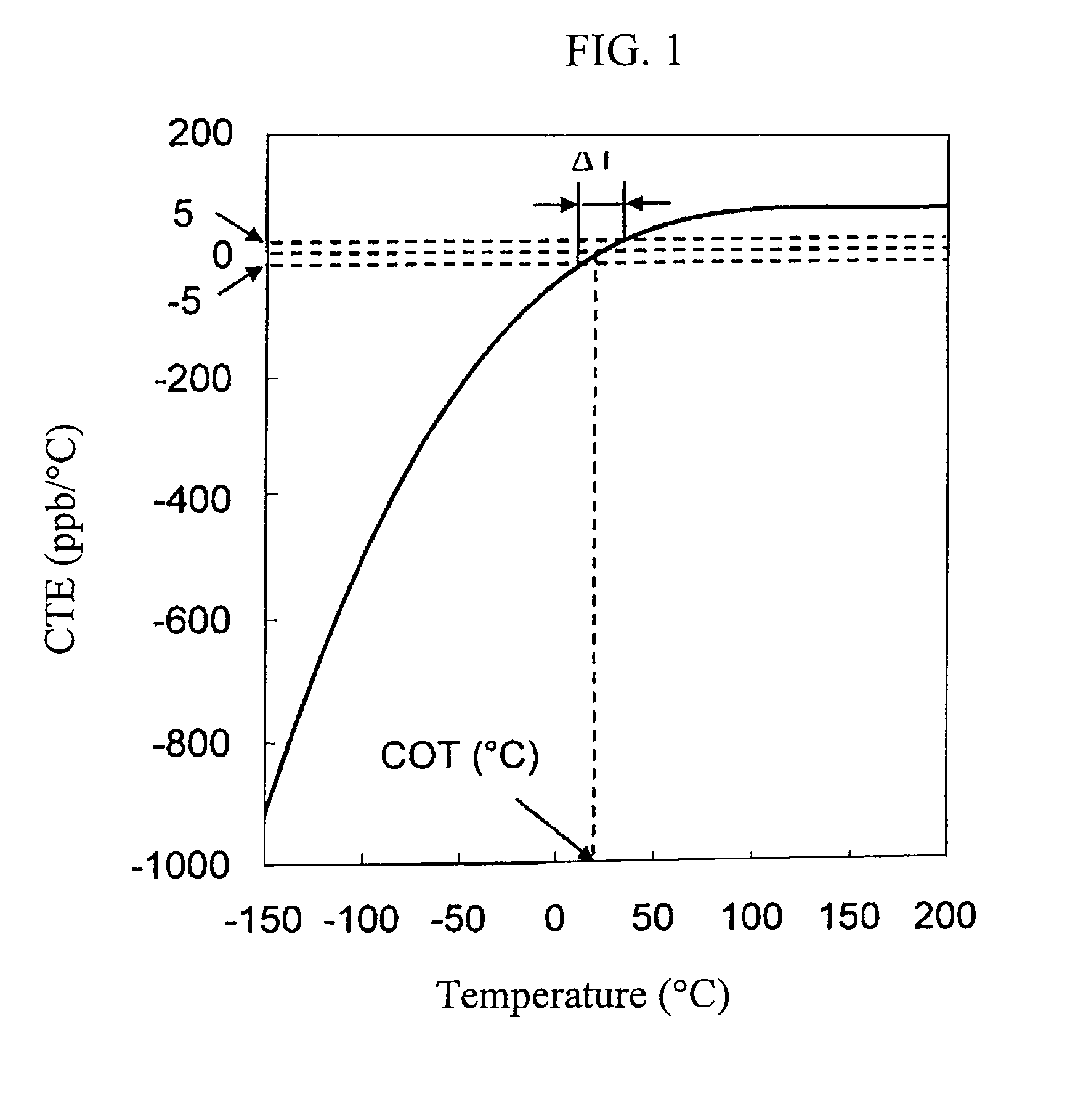Method for producing tio2-sio2 glass body, method for heat-treating tio2-sio2 glass body, tio2-sio2 glass body, and optical base for euvl
- Summary
- Abstract
- Description
- Claims
- Application Information
AI Technical Summary
Benefits of technology
Problems solved by technology
Method used
Image
Examples
example 1
[0172]TiO2—SiO2 glass fine particles obtained by gasifying TiCl4 and SiCl4 each serving as a glass forming material of a TiO2—SiO2 glass, respectively, mixing those and subjecting to heat hydrolysis (flame hydrolysis) in oxyhydrogen flame were deposited and grown on a substrate to form a porous TiO2—SiO2 glass body. Here, both a static mixer and a filter were provided as stirring mechanism for raw material gasses short of feeding TiCl4 and SiCl4 to a burner (step (a)).
[0173]Since it is hard to handle the porous TiO2—SiO2 glass body obtained without any treatment, the porous TiO2—SiO2 glass body was held in the air at 1,200° C. for 4 hours in the state still deposited on the substrate, and then separated from the substrate.
[0174]Thereafter, the porous TiO2—SiO2 glass body was held at 1,450° C. for 4 hours under reduced pressure, to thereby obtain a TiO2—SiO2 dense body (step (b)).
[0175]The TiO2—SiO2 dense body obtained was placed in a carbon mold, and held at 1,680° C. for 4 hours, t...
example 2
[0178]A molded TiO2—SiO2 body was obtained by carrying out the same procedures as in Example 1, except that, after completion of the step (d-2) in Example 1, as the step (e), the glass body was held at 1,700° C. for 4 hours and then naturally cooled (average temperature decreasing rate: about 160° C. / hr) to room temperature in an electric furnace, and the step (f′) was not conducted.
example 3
[0179]The molded TiO2—SiO2 body obtained in Example 2 was heated to 1,590° C. in an electric furnace, held at the temperature for 120 hours, cooled to 950° C. at a rate of 10° C. / hr, held at 950° C. for 72 hours, cooled to 900° C. at a rate of 5° C. / hr, held at 900° C. for 72 hours, and then cooled to room temperature, thereby obtaining a molded TiO2—SiO2 body.
[0180]In the above heat treatment, the time that the TiO2—SiO2 body was held in the temperature region of from T1−90 (° C.) to T1−220 (° C.) was 160 hours, and the average temperature decreasing rate in cooling the TiO2—SiO2 body up to T1−220 (° C.) from T1−90 (° C.) was 0.8° C. / hr.
PUM
| Property | Measurement | Unit |
|---|---|---|
| Temperature | aaaaa | aaaaa |
| Temperature | aaaaa | aaaaa |
| Temperature | aaaaa | aaaaa |
Abstract
Description
Claims
Application Information
 Login to View More
Login to View More - R&D
- Intellectual Property
- Life Sciences
- Materials
- Tech Scout
- Unparalleled Data Quality
- Higher Quality Content
- 60% Fewer Hallucinations
Browse by: Latest US Patents, China's latest patents, Technical Efficacy Thesaurus, Application Domain, Technology Topic, Popular Technical Reports.
© 2025 PatSnap. All rights reserved.Legal|Privacy policy|Modern Slavery Act Transparency Statement|Sitemap|About US| Contact US: help@patsnap.com

